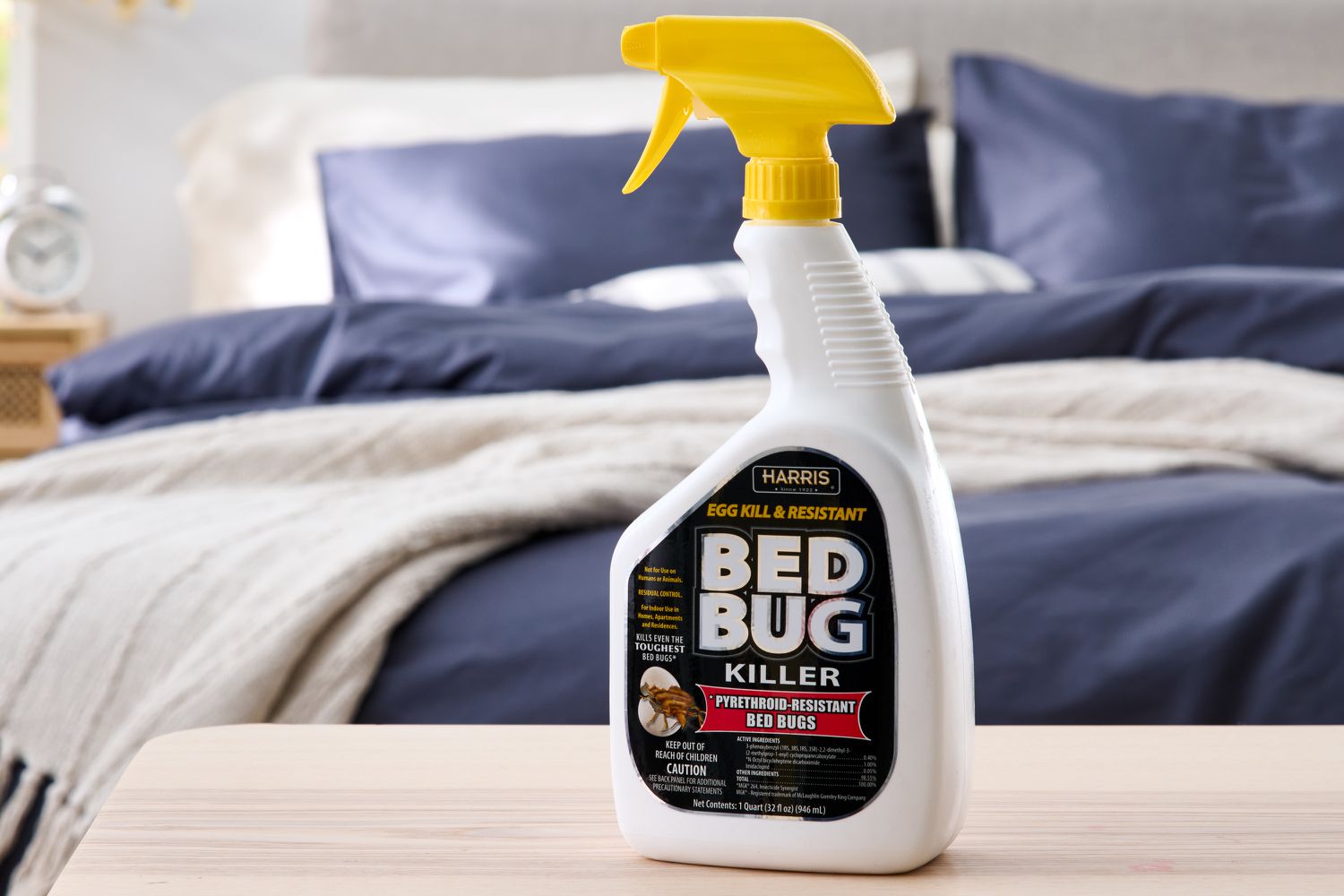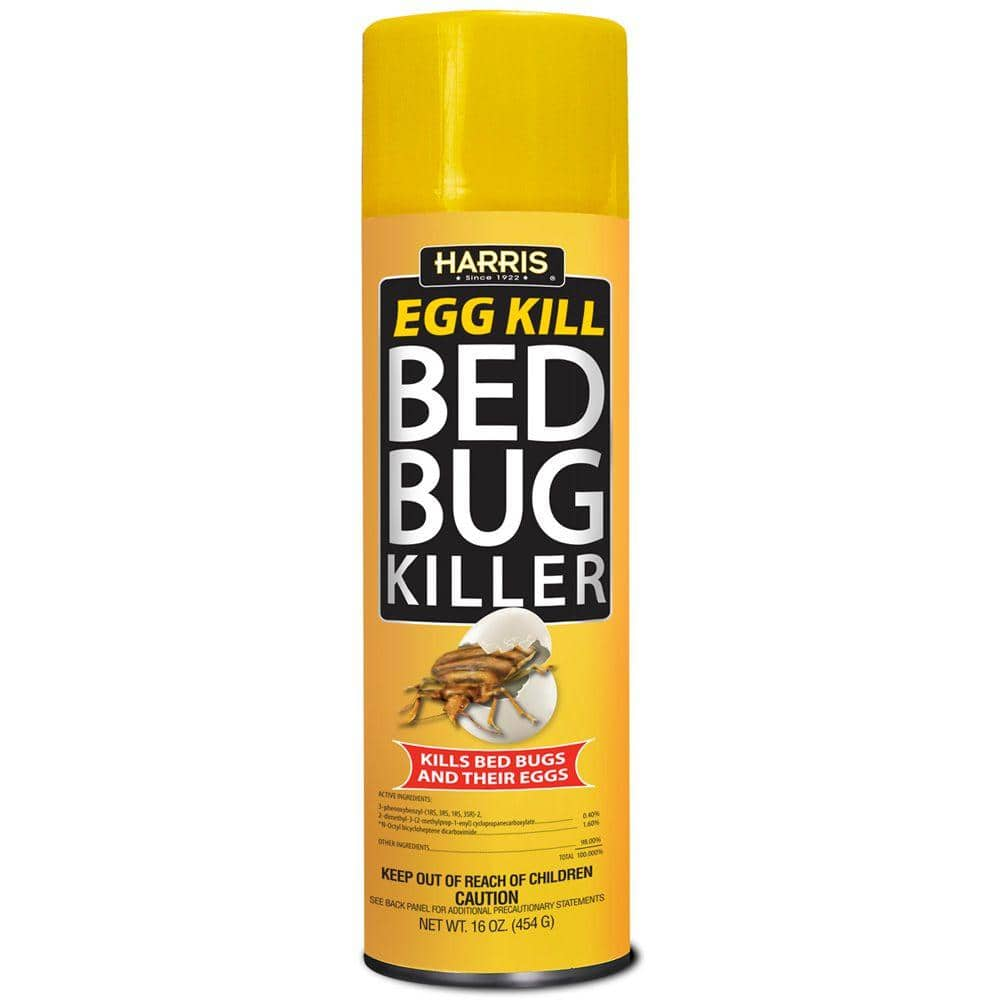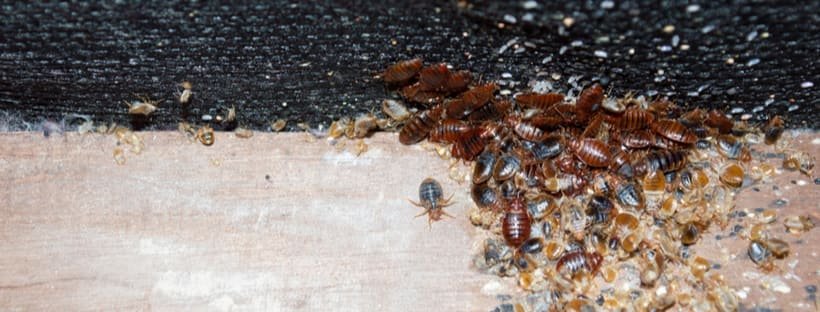To eliminate bed bugs without spraying, apply heat treatment or use diatomaceous earth. Sealing infested items in plastic bags for several days can also starve them.
Dealing with a bed bug infestation can be stressful and challenging, but there are effective methods to tackle this issue without resorting to chemical sprays. Traditional pesticides may not always be the preferred choice, especially in homes where health concerns or environmental considerations are a priority.
Alternatives like heat treatments offer a non-toxic solution that can penetrate through mattresses, furniture, and other common hiding spots, eradicating bed bugs at all life stages. Alternatively, diatomaceous earth acts as a natural, abrasive substance that damages the pests’ exoskeletons, leading to dehydration and death. Other strategies include thorough cleaning and vacuuming, as well as isolating and sealing off infested items to cut off the bugs’ food source. By combining these approaches, homeowners can effectively control and eliminate bed bugs from their environment.
Bed Bug Invasion: The Silent Pests
When night falls, a tiny enemy might lurk silently in your sanctuary. Despite their name, bed bugs claim more than just your mattress. They invade with stealth, feeding unseen and multiplying quickly. A bed bug problem is a cause for alarm, but not despair. Understanding these pests is the first step to evicting them without reaching for the spray bottle.
Identifying The Enemy: Signs Of Bed Bug Infestation
Catching bed bugs early is essential. Look for telltale red bites on your skin upon waking. They often march in a straight line. Search for rust-colored stains on your sheets and mattress edges. These stains are your blood or their excrement. Tiny, shell-like casings and eggs lie hidden in seams and creases. Even a sweet, musty scent can signal their presence. Act fast if you spot these signs.
- Red, itchy bite marks, especially in a line or cluster
- Small blood stains on sheets or pillowcases
- Dark or rusty spots of bed bug excrement on bedding and walls
- Fecal spots, egg shells, or shed skins in areas where bed bugs hide
- An offensive, musty odor from the bugs’ scent glands
Life Cycle And Habits: Understanding Your Adversary
To beat bed bugs, understand their lifecycle. Eggs hatch in a week. These nymphs feed and grow, molting five times before maturing. The whole cycle can be as short as a month, but is typically longer. Bed bugs can hide and live without feeding for several months. They prefer the dark and are most active at night.
| Stage | Duration | Description |
|---|---|---|
| Egg | 1 week | White and oval, barely visible to the naked eye |
| Nymph | 5 weeks | Molt five times, need a meal of blood before each molt |
| Adult | Multiple months | Reproduce quickly, can survive long periods without feeding |
With this knowledge, you can implement effective strategies to tackle the infestation without spraying chemicals. Heat treatment, thorough vacuuming, and using diatomaceous earth are among the key methods to fight off these unwelcome visitors. Remember, it’s not just about killing the bugs; it’s about disrupting their lifecycle to prevent a future invasion.
Non-chemical Strategies: A Safer Approach
Bed bugs are more than a mere annoyance. They can disrupt sleep and cause a myriad of skin issues. Traditional chemical sprays can be effective, but they also introduce toxins into your home environment. A safer approach to tackle these pests involves non-chemical strategies. These methods reduce health risks to you, your family, and your pets. You can eradicate these persistent pests by turning up the heat or by using extreme cold.
Heat Treatment: Turning Up The Temperature
Bed bugs despise high temperatures; it’s their kryptonite. Heat treatment offers a powerful way to kill bed bugs and their eggs without using chemicals. Professionals typically conduct this treatment, but here’s how you can mimic the process:
- Wash bedding and clothes in hot water for 30 minutes.
- Use a steamer on mattresses, couches, and other places bed bugs hide.
- Employ a portable heat chamber to treat items that can’t be washed.
Heat penetrates into small crevices that sprays can’t reach, ensuring a thorough treatment. The goal is to maintain a lethal temperature of at least 117-122 degrees Fahrenheit for a sustained period.
Cold Treatment: Freezing Them Out
If heat isn’t your strategy of choice, cold can be just as effective. Freezing bed bugs is an eco-friendly alternative to chemical sprays. Here’s how to incorporate cold treatment:
- Place infested items like plush toys or clothing into plastic bags.
- Seal the bags tightly and put them in the freezer.
- Keep items in the freezer for at least four days at 0 degrees Fahrenheit.
Freezers can reach temperatures that bed bugs simply cannot withstand. This method is ideal for items that can’t be exposed to high heat.
Manually Destroying The Pests
Manually Destroying the Pests might seem like a tale of David versus Goliath. But, armed with the right techniques, David can win again. Battle bed bugs with simple tools like vacuums and steam cleaners. Show them no mercy!
Vacuuming: Sucking Up The Problem
Vacuums are like a black hole for bed bugs. They can’t escape their sucking force. Here’s a step-by-step guide:
- Strip your bed. Leave no linen unturned.
- Use a brush tool. Scrub seams and crevices.
- Vacuum all surfaces. Furniture, carpets, and drapes too.
- Empty the vacuum. Do it outside, right away.
Remember to check for bites and signs even after vacuuming. Repeat regularly; bed bugs are sneaky.
Steam Cleaning: The Power Of Vapor
Heat is a bed bug’s worst enemy. Steam penetrates their hideouts, leaving no survivors. Here’s your battle plan:
- Get a steamer. Make sure it reaches at least 200°F.
- Target their zones. Mattresses, furniture, carpets.
- Move slowly. It gives steam time to cook bugs.
- Let it dry. Avoid mold by airing out treated areas.
Post-steam, check corners and folds. Bed bugs might reappear, so stay vigilant.
Encasements: Sealing The Deal
Encasements play a crucial role in the war against bed bugs. These protective coverings seal off your mattress and box spring, denying bed bugs their favorite hiding spots. Quick to install and simple to maintain, encasements can be a bed bug’s worst nightmare and your best friend in ensuring a peaceful sleep.
Mattress And Box Spring Encasements: Fortify Your Bed
Think of encasements as armor for your bed. They tightly wrap around your mattress and box spring, creating an impenetrable barrier. Bed bugs cannot enter or escape once it’s on. This makes your bed a safe zone.
- Choose a bed bug-proof encasement.
- Inspect for rips or openings before placing it.
- Zip it up securely, leaving no space for bed bugs to sneak through.
It is essential to keep the encasement on for at least a full year. Doing this ensures you trap any lingering bugs inside. They will eventually die without a blood meal.
Isolating The Bed: Preventing Climbing And Hiding
With your bed fortified, the next step is blocking the paths bed bugs use to reach you. Bed bugs are known for their climbing abilities but they’re not great jumpers.
| Isolation Strategy | Description | Effectiveness |
|---|---|---|
| Interceptors | Place these cups under bed legs. | Prevents bugs from climbing up. |
| Move the Bed Away | Keep bed away from walls or furniture. | No bridges to the bed. |
| Remove Skirts or Covers | Don’t let cloth touch the floor. | Removes hiding spots. |
Be vigilant about keeping sheets and blankets tucked in. They should not touch the floor. Replace bed skirts with alternatives that leave no safe haven for bed bugs.
Home Remedies And Natural Options
Bed bugs can turn your comfort haven into a place of distress. Conventional methods often include spraying chemicals, but that’s not always desirable. Are you searching for gentler, more natural ways to eliminate these pesky invaders? Read on to discover effective home solutions to declare victory over bed bugs without resorting to sprays.
Diatomaceous Earth: The Natural Killer
Diatomaceous earth is a warrior in the fight against bed bugs. This powder is actually the fossilized remains of tiny aquatic organisms. Here’s how to use it:
- Apply thinly around bed frames and mattress edges.
- Leave it undisturbed for several days to effectively kill bugs.
- Clean up with a vacuum, then reapply to maintain defense.
This method works as the powder causes dehydration in bed bugs, leading to their demise. Always use food grade diatomaceous earth to ensure it’s safe around your home.
Essential Oils: Aromatic Defenses
The smell of certain essential oils not only pleases your nose but also repels bed bugs. Consider these options:
| Oil | Method |
|---|---|
| Lavender | Mix with water, spray on bedding and curtains. |
| Tea Tree | Dilute with water, spray on floors and furniture. |
| Eucalyptus | Combine with alcohol, spray on bed frame and baseboards. |
Regular use of these oil mixtures creates an environment hostile to bed bugs. This helps prevent new infestations. Remember, high concentrations can be harmful, so dilute oils adequately.

Credit: storables.com
Maintaining A Fortress Against Future Invasions
Winning the battle against bed bugs demands a steadfast defense. The goal is to prevent them from returning. By adopting continuous prevention measures, your home becomes a fortress against these pests. Follow these straightforward strategies to keep your living space bug-free.
Declutter And Clean: Minimizing Hiding Spots
Clutter provides perfect cover for bed bugs to thrive undiscovered. Reducing clutter makes it harder for these pests to hide.
- Empty all drawers and closets.
- Seal unused items in plastic bags.
- Clean everything thoroughly.
Don’t forget under the bed and other furniture. Vacuum these areas regularly. Wash clothing and bedding at a high temperature to kill any hidden bugs.
Monitoring: Keeping An Eye Out For Recurrence
Vigilance is key, even after bed bugs are gone. Regular check-ups can catch a new invasion early.
| Location | Action | Frequency |
|---|---|---|
| Bedding | Inspect seams and folds | Weekly |
| Furniture | Check crevices and cracks | Monthly |
| Floors & Walls | Look for signs near baseboards | Bi-monthly |
Consider interception devices under bed legs. They trap bed bugs moving to and from beds or furniture. Check these traps regularly.
Professional Assistance Without The Spray
Bed bugs can be a nightmare, but not everyone loves the idea of spraying chemicals. Professional pest control doesn’t always mean reaching for the spray bottle. Experts offer methods that are just as effective, minus the chemical residue. Let’s explore how you can say goodbye to bed bugs with the help of professionals, sans the spray.
Choosing The Right Pest Control Service
Selecting a pest control service is the first step towards a bug-free home. It’s important to look for services that specialize in eco-friendly solutions. These professionals use tactics that are safe for both your family and pets.
| Service | Eco-Friendly? | Pet-Safe |
|---|---|---|
| Company A | Yes | Yes |
| Company B | No | No |
| Company C | Yes | Yes |
Seek out reviews or ask for referrals to find a trusted provider. Look for certifications in green pest management to ensure quality service.
Understanding Non-chemical Treatment Options
There are several non-chemical treatments for bed bugs that professional services may offer. These treatments often provide a long-term solution without harmful side effects.
- Heat Treatment: A popular method which kills bed bugs at all life stages by raising the room temperature.
- Cryonite Treatment: Uses carbon dioxide snow to freeze bed bugs instantly. It’s non-toxic and leaves no residue.
- Steam Treatments: A chemical-free way that penetrates fabrics and cracks where bed bugs hide.
Discuss these options with the pest control provider to determine which suits your situation best. Professionals tailor their approach to maximize effectiveness and provide peace of mind.

Credit: m.youtube.com
Behavioral Changes To Reduce Bed Bug Risks
Are you tired of bed bug bites? Not a fan of sprays? Good news! You can kick bed bugs out by changing how you do things every day. Let’s dive into simple habits that can protect your home from these pesky critters.
Travel Smart: Avoiding Bed Bugs On The Road
- Check hotel reviews for bed bug mentions before booking.
- Inspect hotel beds and furniture for tiny black spots or bugs.
- Use metal luggage racks to keep bags off the floor.
- Seal your luggage in plastic bags to block bed bugs.
- After a trip, wash all clothes in hot water and dry on high heat.
Second-hand Furniture: Inspect Before You Collect
Love a thrift store find? Here’s how to make sure it’s bug-free:
- Take a flashlight to the store for a detailed inspection.
- Search seams and crevices for bed bug signs.
- Decline any items with red flags, like bug eggs or shed skins.
- Do not bring infested items into your home.
- Once home, clean and treat the item with a bed bug-killing steamer.

Credit: www.homedepot.com
Frequently Asked Questions For How To Get Rid Of Bed Bugs Without Spraying?
Can Heat Kill Bed Bugs Effectively?
Yes, heat treatments are highly effective at killing bed bugs. Exposing bed bugs to temperatures above 120°F for several hours can eliminate them. Professional exterminators often use this method to treat infested areas without chemicals.
What Are Natural Bed Bug Deterrents?
Natural deterrents include diatomaceous earth, baking soda, and essential oils like tea tree or lavender. Sprinkle diatomaceous earth around bed frames and mattresses, or use a mixture of essential oils and water as a spray.
Is Vacuuming Useful For Bed Bug Removal?
Vacuuming can remove bed bugs and their eggs from mattresses, carpets, and cracks. Use a vacuum with a HEPA filter for the best results, and be sure to dispose of the vacuum contents securely.
Do Bed Bug Interceptors Work?
Bed bug interceptors, placed under the legs of furniture, effectively trap bed bugs as they climb up. These devices monitor infestations and reduce the chances of bed bugs reaching your bed.
Conclusion
Banishing bed bugs can be a challenge, yet it’s achievable through simple, non-chemical methods. From steam cleaning to silica gel, these strategies offer safer alternatives to fumigation. Remember, persistence and consistency are key. Embrace these eco-friendly tactics and reclaim the comfort of your bug-free home.
Stay vigilant and sleep tight without the bite.
Related posts:

I’m MD Tanvir, and I bring years of expertise gained from working closely with pest control companies to the forefront. My journey in the industry has inspired me to launch Bug Battler, a platform aimed at equipping people with the know-how to combat pests autonomously. Through Bug Battler, I aim to empower individuals with practical insights to tackle pest infestations effectively.

